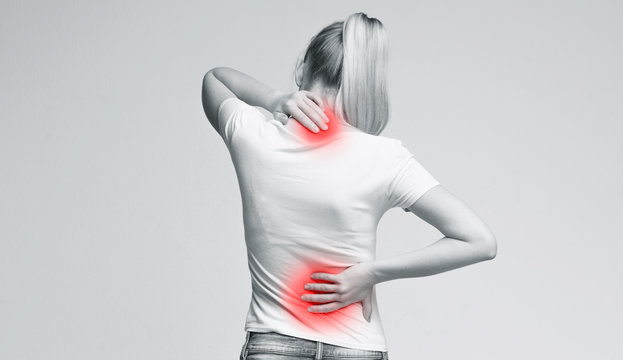Pain is a universal experience that can range from mild discomfort to severe agony, affecting our daily lives and overall well-being. Whether caused by injury, illness, or chronic conditions, finding effective pain relief is crucial for maintaining quality of life. This article explores various pain relief strategies that can provide immediate comfort, helping individuals manage pain effectively.
Understanding Pain
Before delving into pain relief strategies, it’s essential to understand the nature of pain. Pain is a complex phenomenon that serves as the body’s warning system, alerting us to potential harm. It can be categorized into two main types:
Acute Pain:
This type of pain is short-term and typically results from a specific injury or illness. It serves a protective function, warning us to avoid harmful actions.
Chronic Pain:
Chronic pain persists for an extended period, often lasting longer than three months. It can result from conditions such as arthritis, fibromyalgia, or nerve damage, and may require more complex management strategies.
Immediate Pain Relief Strategies
When seeking immediate relief from pain, several strategies can be employed, ranging from home remedies to over-the-counter medications. Below, we explore some of the most effective methods.
1. Over-the-Counter Medications
Over-the-counter (OTC) pain relievers are often the first line of defense against pain. Common options include:
Acetaminophen (Tylenol):
Effective for mild to moderate pain relief, acetaminophen is commonly used for headaches, muscle aches, and fever reduction. It works by blocking pain signals in the brain.
Nonsteroidal Anti-Inflammatory Drugs (NSAIDs):
Medications like ibuprofen (Advil, Motrin) and naproxen (Aleve) help reduce inflammation, making them suitable for conditions like arthritis, menstrual cramps, and post-injury pain.
Aspirin:
Another NSAID, aspirin can relieve pain and reduce inflammation. However, it’s essential to be cautious about its use, especially in children and individuals with certain health conditions.
2. Cold and Heat Therapy
Using temperature to relieve pain is a simple yet effective strategy.
Cold Therapy:
Applying a cold pack or ice wrapped in a cloth can reduce swelling and numb sharp pain, making it ideal for acute injuries like sprains or strains. Cold therapy is most effective in the first 48 hours following an injury.
Heat Therapy:
Heat packs, warm baths, or heating pads can help relax muscles and improve blood circulation, providing relief from tension and chronic pain conditions like back pain or arthritis. It’s important to avoid applying heat to swollen areas.
3. Topical Pain Relievers
Topical analgesics can provide targeted relief without the side effects associated with oral medications. Options include:
Menthol and Capsaicin Creams:
Products containing menthol create a cooling sensation, while capsaicin (derived from chili peppers) can help reduce pain by depleting substance P, a neurotransmitter involved in pain signaling.
Lidocaine Patches:
These patches contain a local anesthetic that can numb specific areas, making them effective for localized pain relief.
4. Mind-Body Techniques
Mind-body techniques can help alleviate pain by addressing its psychological aspects:
Meditation and Mindfulness:
Practicing meditation and mindfulness can reduce the perception of pain. These techniques promote relaxation and help individuals focus on the present moment, decreasing stress and anxiety related to pain.
Deep Breathing Exercises:
Simple deep breathing techniques can activate the body’s relaxation response, lowering stress levels and providing immediate pain relief. Breathing deeply through the nose and exhaling slowly can help calm the nervous system.
Guided Imagery:
This technique involves visualizing calming and peaceful scenarios to distract from pain. It can be particularly useful during painful procedures or recovery.
5. Physical Activity and Stretching
While it may seem counterintuitive, gentle physical activity and stretching can relieve pain, particularly for chronic conditions.
Gentle Exercise:
Low-impact activities like walking, swimming, or yoga can improve flexibility, strengthen muscles, and reduce pain over time. Exercise releases endorphins, which act as natural painkillers.
Stretching:
Incorporating stretching routines can help alleviate muscle tension and improve range of motion, providing relief from discomfort associated with tight muscles.
6. Acupuncture and Massage Therapy
Both acupuncture and massage therapy are effective complementary treatments for pain relief.
Acupuncture:
This ancient Chinese practice involves inserting thin needles into specific points on the body to stimulate the nervous system and promote natural healing. Research has shown acupuncture can be effective for various types of pain, including migraines and chronic back pain.
Massage Therapy:
Massage can reduce muscle tension, improve circulation, and promote relaxation. Techniques such as Swedish or deep tissue massage can help alleviate pain and discomfort in targeted areas.
7. Herbal Remedies and Supplements
Several herbal remedies and supplements are believed to provide pain relief:
Turmeric (Curcumin):
Known for its anti-inflammatory properties, turmeric can help reduce pain related to conditions like arthritis. It’s often consumed as a supplement or added to meals.
Ginger:
Ginger has anti-inflammatory properties and can be effective in reducing muscle pain and soreness. It can be consumed as tea or taken in supplement form.
Willow Bark:
Traditionally used for pain relief, willow bark contains salicin, a compound similar to aspirin. It can be effective for headaches and lower back pain.
8. Cognitive Behavioral Therapy (CBT)
Cognitive behavioral therapy is a psychological approach that can help individuals manage pain more effectively. CBT focuses on changing negative thought patterns related to pain, teaching coping strategies, and improving emotional well-being. This technique can be particularly beneficial for those suffering from chronic pain, offering long-term strategies for pain management.
Summary
Managing pain effectively is essential for maintaining a good quality of life. Immediate pain relief strategies can provide comfort and restore functionality, allowing individuals to engage in their daily activities without discomfort. From over-the-counter medications and topical treatments to mind-body techniques and physical therapy, various options are available to address different types of pain.
It’s important to note that while these strategies can provide immediate relief, addressing the underlying causes of pain is crucial for long-term management. Consulting with a healthcare professional for persistent pain is essential to develop a comprehensive pain management plan tailored to individual needs. By combining immediate relief strategies with long-term solutions, individuals can take proactive steps towards a pain-free life.
